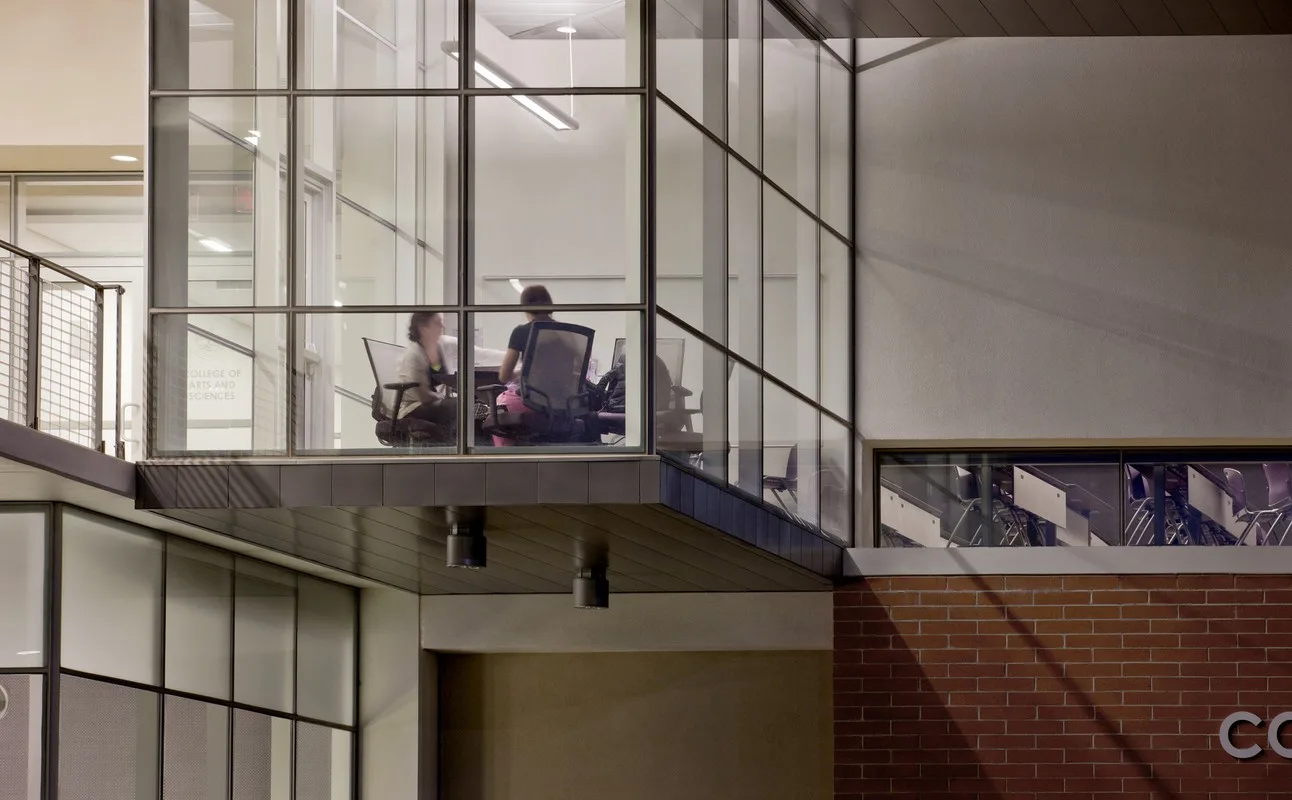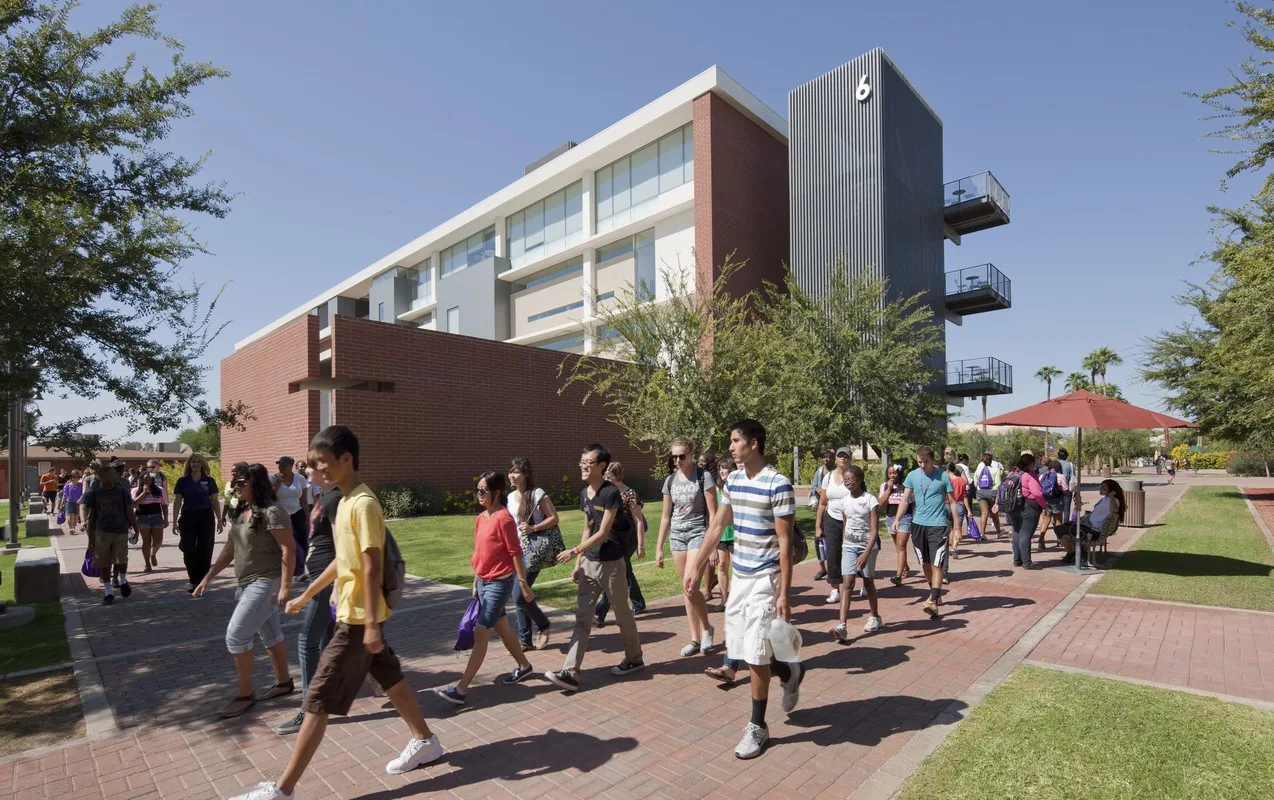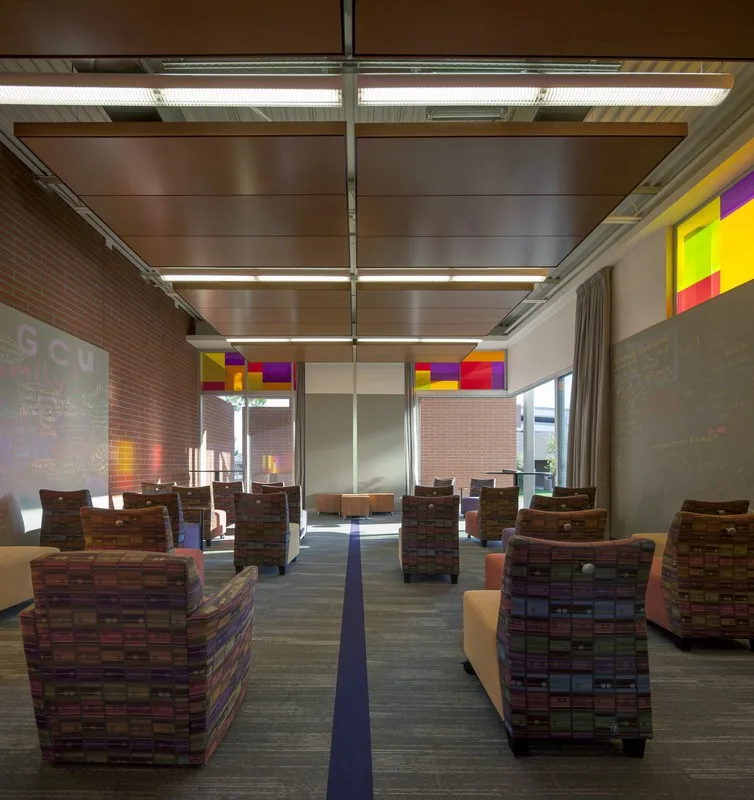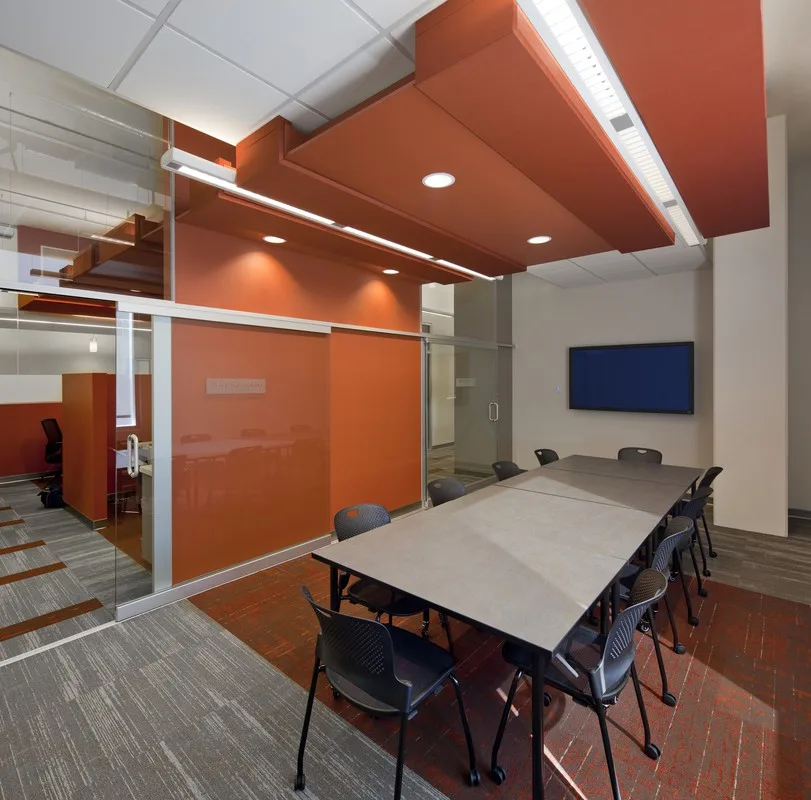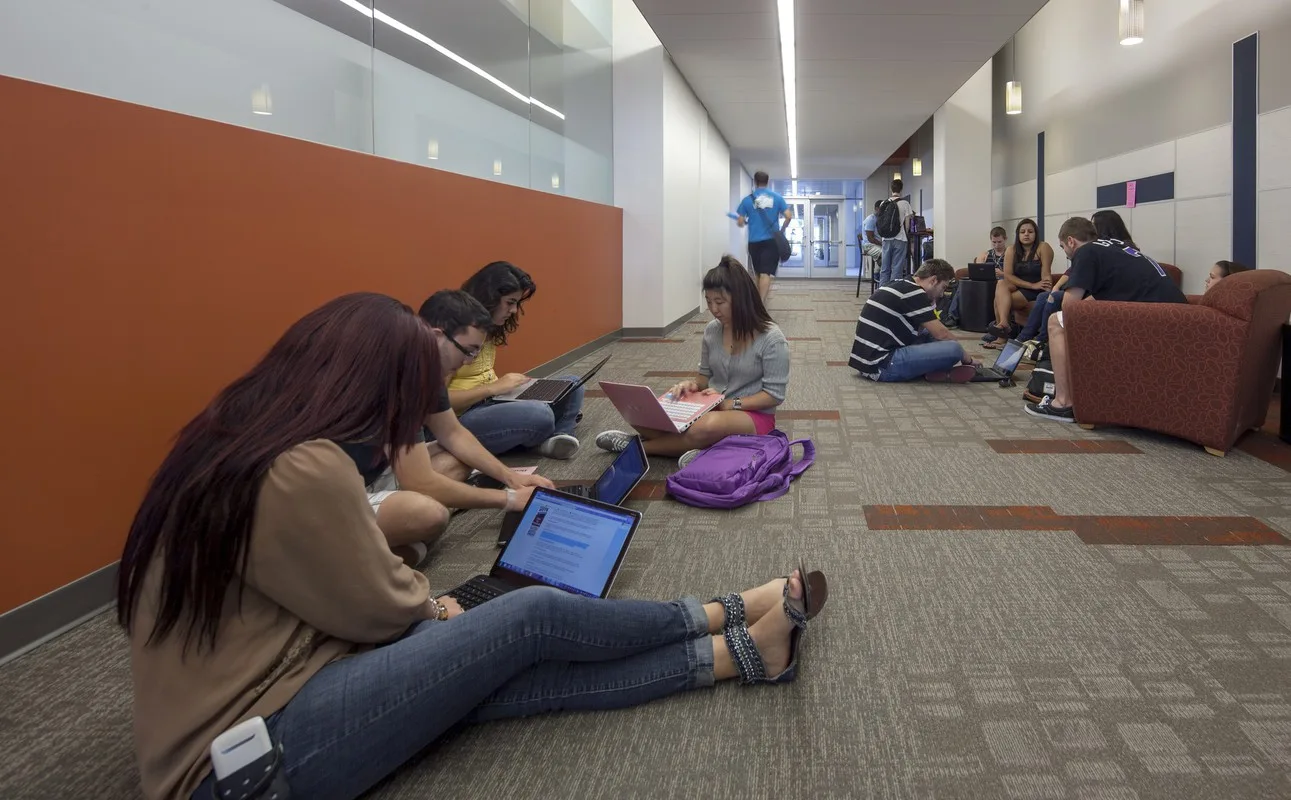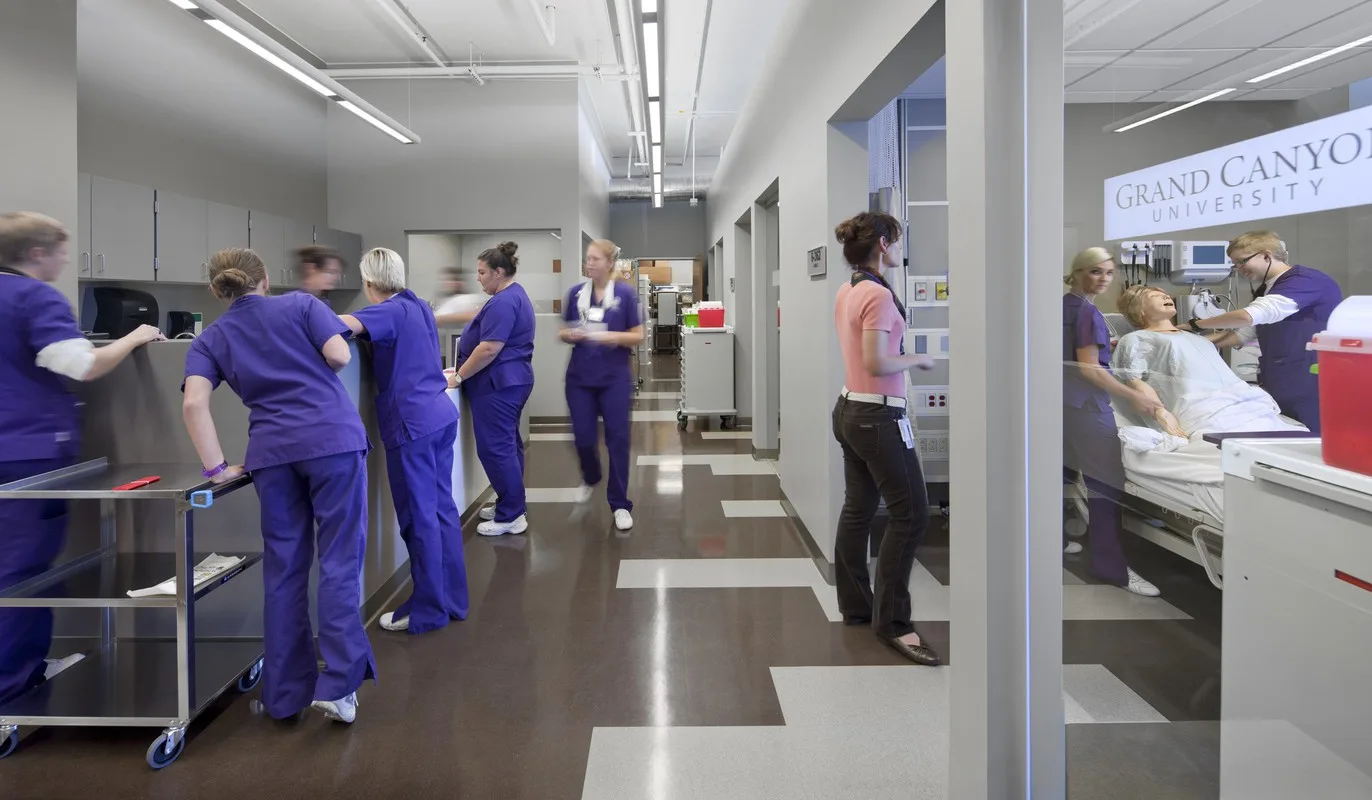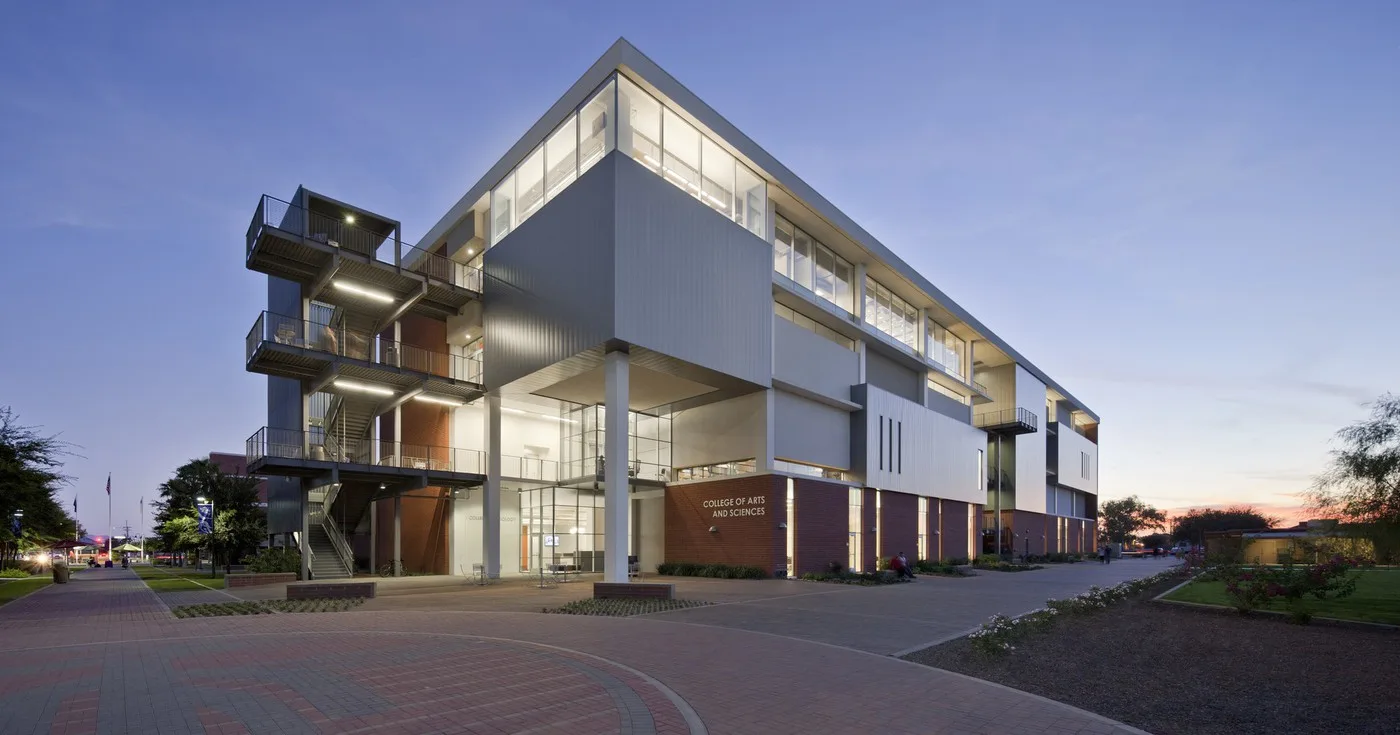
A Mixed-Use Environment as the Hub of Learning
Grand Canyon University College of Arts and Sciences
Student-centered learning takes place in flexible environments where professors and students alike can restructure the room based upon the immediate goals of learning. Whether breaking into groups for project-based work, engaging with technology, or creating space for students to work with their hands, our goal in designing classrooms is to create a space for exploration and discovery.
The four-story structure is designed to blend into the developing modern campus fabric while embracing the University’s values and serve as a campus hub and “stopping point” by accommodating a mixed-use environment.
The building form and materials established by this metaphor also advance the future of GCU in very practical ways through the College of Arts and Sciences. They serve the purpose of promoting 21C learning environments by providing flexible learning spaces, innovative learning labs for nursing skills education and state-of-the-art science and forensic education. The classroom, lab and office spaces are flexible, because they are made from lightweight materials that can be more easily moved or altered around the fixed building structure. The nursing skills learning labs offer an advanced simulation of real working conditions with a control room for instructors. With a state-of-the-art organic chemistry lab, forensic chemistry lab, DNA extraction lab, and DNA amplification lab housed in this building, GCU is on the cutting-edge of science education.

